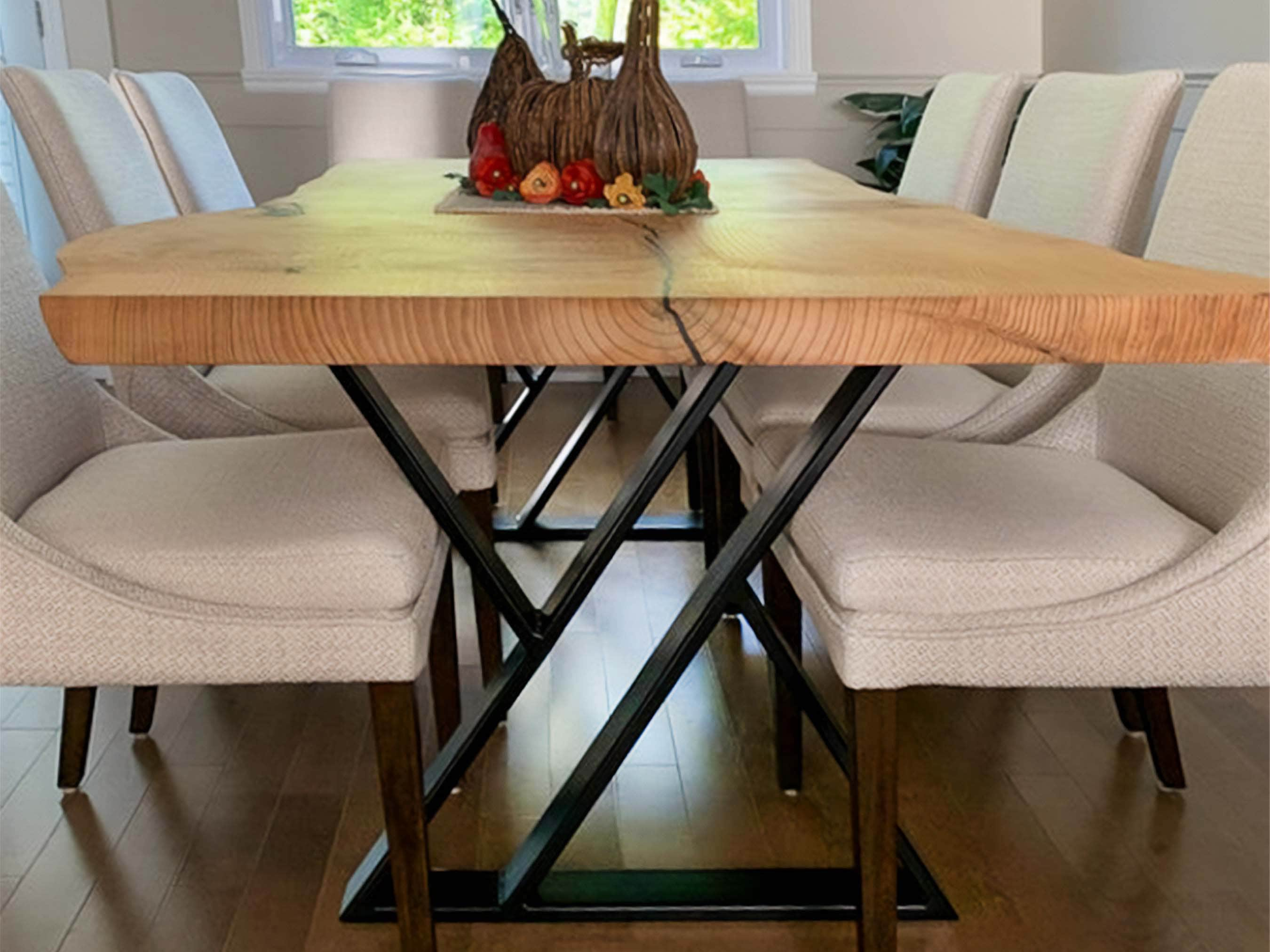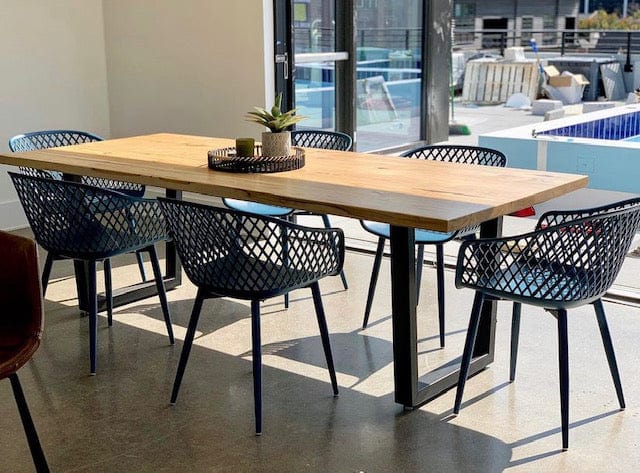Dining Room Table Legs: What to Take into consideration Prior To You Purchase
Dining Room Table Legs: What to Take into consideration Prior To You Purchase
Blog Article
The Ultimate Guide to Selecting the very best Designs for Table Legs
Selecting the finest styles for dining table legs is a nuanced procedure that needs balancing aesthetic allure with practical considerations. Custom options use a chance for personal expression, ensuring your table becomes a distinct focal factor.
Modern Eating Table Legs
In the realm of contemporary furniture design, modern-day eating table legs attract attention for their streamlined and innovative looks. Characterized by clean lines and minimalist forms, these legs often utilize products such as stainless-steel, chrome, and tempered glass to produce an advanced aesthetic appeal. Not only do they improve the overall style of the eating table, however they also add to its structural stability and functional flexibility.
One of the key attributes of modern table legs is their adaptability to numerous table tops, from marble and glass to timber and engineered surfaces. Designers regularly explore geometric shapes, consisting of angular, tapered, and even sculptural forms, to include a special touch to every item. This strategy not only makes certain a contemporary look but additionally permits for higher customization to fit specific tastes and interior decoration.
Modern eating table legs also emphasize convenience of maintenance and resilience. Using top notch, corrosion-resistant materials guarantees long life while calling for minimal maintenance. In addition, these legs are frequently developed to assist in quick setting up and disassembly, straightening with the modern customer's need for comfort and flexibility. Thus, modern-day eating table legs symbolize both kind and function, making them a preferred option in today's design landscape.
Rustic Farmhouse Styles
While modern-day table legs mesmerize with their streamlined, minimal layouts, rustic farmhouse designs use a contrasting yet equally engaging method to furniture aesthetic appeals. Rooted in simpleness and performance, rustic farmhouse table legs typically include durable, solid wood constructions that stimulate a sense of warmth and custom. These designs usually incorporate recovered or distressed wood, adding character and a vintage charm to any kind of dining room.
Among one of the most distinct functions of rustic farmhouse table legs is their substantial, durable appearance. Commonly crafted from oak, pine, or other sturdy timbers, these legs can include a selection of forms, from straight and square to elegantly turned or tapered layouts (dining room table legs). The workmanship stresses resilience, with hand-finished details that highlight the all-natural grain and imperfections of the wood, making each piece uniquely stunning
Furthermore, rustic farmhouse legs regularly utilize classic joinery methods, such as mortise and tenon joints, making sure stability and long life. This style is particularly well-suited for producing a cozy, inviting environment, best for family members celebrations and common eating experiences. By integrating rustic farmhouse table legs, one can easily blend capability with sentimental looks, achieving a classic allure that improves the eating setting.
Traditional and Timeless Layouts
Long-lasting elegance specifies classic and classic table leg styles, seamlessly mixing tradition with refinement. These layouts catch the significance of withstanding elegance, frequently featuring elaborate workmanship that pays tribute to historical linked here designs while maintaining a modern charm (dining room table legs). The visual balance attained via such legs ensures they continue to be relevant and fashionable across different interior settings, from traditional to modern homes

Moreover, the convenience of timeless eating table legs enables them to complement different tabletop designs, developing a natural and harmonious eating experience. Their timeless nature guarantees that they stand up to transforming patterns, making them a useful financial investment for any type of eating space. Whether you seek downplayed refinement or special appeal, traditional table legs offer an excellent blend of form and function, improving the general visual of your eating area.
Personalized and One-of-a-kind Options
When it pertains to eating table leg styles, personalized and distinct options provide an unique method to showcase individual taste and creative thinking. These options enable home owners and developers to relocate past standard layouts, developing a table that really mirrors private style and the general style of the eating area. Customized legs can be crafted in a myriad of forms, dimensions, and patterns, from detailed carvings to modern geometric kinds, making it possible for limitless possibilities.
One-of-a-kind eating table legs can work as a centerpiece in a space, attracting attention and sparking discussion. Legs made to resemble tree branches can bring a touch of nature indoors, while sculptural metal legs can convey a modern and commercial panache. An additional preferred trend is including multimedias, such as combining timber with metal or glass, to create a striking comparison and included aesthetic interest.

Material and Complete Choices
Choosing the ideal product and coating for dining table legs is vital to attaining the desired aesthetic and capability. The selection of materials can substantially impact the table's sturdiness, maintenance, and total design. Usual products for eating table legs include wood, metal, and acrylic.
Timber continues to be an ageless choice, supplying warmth and versatility. Maple, oak, and walnut are prominent options due to their effectiveness and rich structures. Metal legs, such as those made from stainless steel or iron, provide a modern and commercial appearance. They are recognized for their strength and reduced upkeep. Acrylic legs, although much less traditional, provide a contemporary and ventilated feeling, ideal for smaller sized spaces or minimal designs.
The coating put on the legs better refines their look and sturdiness. Wood legs can be stained to improve their all-natural grain or repainted for a more uniform appearance. Metal legs could be brightened for a streamlined surface or powder-coated for included protection against wear and corrosion. Acrylic legs normally require marginal completing yet advantage from normal cleaning to preserve their quality.
Eventually, the selection of product and surface ought to line up with the dining table's general design, usage requirements, and the existing decoration of the eating room.
Final Thought
The choice of dining table legs significantly impacts the visual and functionality of an eating area. Modern styles use streamlined, minimal charm, while rustic farmhouse styles give warmth and personality. Cautious factor to consider of these variables ensures an unified and visually attractive eating area.
Report this page